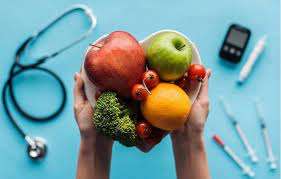How to reverse diabetes
- Avoid fructose
- Avoid refined carbohydrates
- Increase natural fats
- Eat only unprocessed foods
- Lose weight as soon as possible after diagnosis
- Eat a whole-foods plant-based diet
- Limit or avoid refined foods and animal products
Type 2 diabetes, a chronic condition characterized by elevated blood sugar levels, is a significant health concern worldwide. But is it possible to put it into remission? In this comprehensive guide, we’ll delve into the possibilities, strategies, and crucial steps you can take to achieve remission from Type 2 diabetes.
Understanding Remission
To clarify, when we talk about Type 2 diabetes going into remission, it means that blood sugar levels have remained within the normal range for at least three months without the use of glucose-lowering medications. However, it’s essential to note that we do not use terms like ‘reversed’ or ‘cured’ to describe Type 2 diabetes. Instead, we refer to it as being in remission. Regular check-ups with your healthcare provider are crucial to monitor for any signs of recurrence.
Early Diagnosis Matters
Early diagnosis and intervention are critical in managing Type 2 diabetes effectively. Achieving remission is more likely if you’ve been recently diagnosed, have lower blood sugar levels, and have successfully achieved weight loss.
Identifying Diabetes
How can you determine if you have diabetes? A simple blood test, measuring the glucose level in your blood, is the primary diagnostic tool. While family history plays a significant role in Type 2 diabetes, environmental factors such as lifestyle also have a considerable impact. If you experience any of the following symptoms, it’s essential to see your doctor promptly:
- Excessive thirst
- Frequent urination
- Insatiable hunger
- Fatigue
- Blurred vision
- Numbness in the feet
- Unexplained weight loss
Diabetes Treatment Approaches
Diabetes medications are typically prescribed once a diabetes diagnosis is confirmed. Various classes of drugs work differently to achieve normal glucose levels, some by increasing insulin sensitivity. However, it’s important to note that not everyone with Type 2 diabetes needs insulin treatment. Many glucose-lowering medications are available before resorting to insulin therapy, depending on individual circumstances.
The Power of Lifestyle Changes
While medications can be effective, lifestyle modifications can play a pivotal role in inducing diabetes remission and normalizing blood glucose levels without the need for medications. One key factor is weight loss, which improves insulin resistance and glucose metabolism, thus lowering blood sugar levels into the normal range.
The precise amount of weight loss required to induce remission can vary significantly from person to person. Factors such as the duration and severity of diabetes influence this. Therefore, it is crucial to have a discussion about weight loss with your healthcare provider to determine the right approach for you.
Lifestyle Changes for Diabetes Remission
- Exercise Regularly: Aim for at least 30 minutes of exercise a day, five days a week. Combine cardiovascular workouts with strength training for optimal results.
- Weight Management: Work with your healthcare provider to devise a weight loss strategy that may include medications, dietary changes, or bariatric surgery.
- Healthy Eating: There’s no one-size-fits-all diabetes diet. Start by reducing processed foods, sugar, and carbohydrates. Consider following the Diabetes Plate Method or consult with a nutritionist for a personalized dietary plan.
- Prioritize Sleep: Ensure you get a minimum of seven to eight hours of quality sleep each night.
- Quit Smoking: If you smoke, seek guidance and support from your healthcare provider to quit this habit.
- Address Sleep Apnea: If you suspect you have sleep apnea, undergo an evaluation with your doctor and pursue treatment as needed.
Differentiating Insulin Resistance, Prediabetes, and Diabetes
Understanding the progression of diabetes-related conditions is essential:
- Insulin Resistance: This occurs when your body doesn’t respond adequately to insulin, requiring more insulin to lower glucose levels. If the pancreas can’t produce enough insulin to overcome this resistance over time, prediabetes or diabetes can develop.
- Prediabetes: Prediabetes is characterized by higher than normal blood glucose levels that don’t yet meet the criteria for a diabetes diagnosis. It typically presents with no symptoms, underscoring the importance of regular blood tests for early detection.
- Preventive Measures: Medications like metformin can help prevent the progression from prediabetes to diabetes, but lifestyle changes are even more effective. Healthy habits can prevent and reverse insulin resistance and prediabetes, emphasizing the importance of initiating these changes early.
Hope you loved our blog on How to reverse diabetes
Do Follow Us On Twitter – https://twitter.com/Uniqverses708
We Have a Wide Range of Unique information For You On Uniqverses.com
Please like, comment & Share if you want us to keep bringing these amazing and unique information for you.









